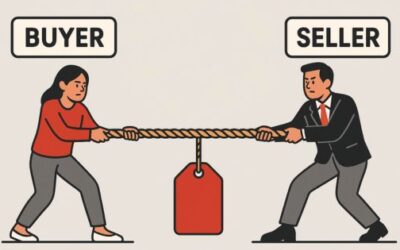Avoiding the Pitfalls of the Product Pitch
This happens all the time on sales calls – we’re doing a discovery and we get flustered when the buyer doesn’t have a problem or an apparent “need” for our product. Rather than remaining calm and using our brains to try and find another angle we default to a product pitch. Salespeople have a tendency to do 2 things when they get stuck – 1. Focus on a technical problem the buyer has mentioned and try to sell to that or 2. Start pitching how great the product is. Stick to your method, continue to search for large business problems that the client can solve using your product.
Show notes:
6:59 – You need to find a problem
10:00 – You need to stay away from product pitches when you get trapped
11:15 – Self diagnosing questions hurt because your buyer may not know their limitations
13:15 – Stay out of the future state
14:50 – If you’ve done your research on your market then you should know the questions to ask!
Product Pitches Vs. Personalized Engagement
In sales, success hinges on the ability to connect with potential clients and help them solve their business problems. The product pitch has long reigned as a staple of the trade. However, markets have evolved, customers are more perceptive and thus the conventional sales pitch is losing it’s luster. The market is shifting towards meaningful engagement (i.e. discovery calls) and personalized interactions and sales demonstrations. Today we’re going to explore the dangers of defaulting to a sales pitch during a discovery call and how it is detrimental to sales performance. The era of one-size-fits-all sales pitches is behind us, genuine conversations and customer-centricity now reign supreme.
Ditch The Pitch
First and foremost, if you’re here you should know that our approach to sales and sales training is taking the focus from the product and/or company and shifting that focus to the problems the buyer is facing. Product pitches simply can’t survive in this world. They are scripted, one-sided monologues that highlight the product, it’s features and benefits, and the company. You cannot be a problem-centric or customer-centric seller and still utilize a pitch.
Telling is Not Selling
The primary pitfall of a product pitch is the failure or inability of a rep to actively listen to a prospect’s concerns and unique requirements. You or your rep are so focused on delivering their rehearsed sales pitch script they miss vital cues and overlook opportunities to dig into the root causes and desired outcomes. Missing these cues or using a generic script is a good way to make the interaction feel impersonal, did you even hear what I said? An inclination to push a product’s features without a deep understanding of the problems can leave the prospect feeling exactly how you’re treating them, as a target being hunted.
Transactional Selling Vs. Consulting
When you default to a product pitch, you are setting the tone of a transactional relationship rather than a consultive one. As you bombard a prospect with information they may or may not find relevant your trust, credibility, and consultive relationship drips away. Defaulting to a pitch limits your ability to understand the customer’s problems and objectives leading to missed opportunities to tailoring a potential solution to them.
You’re also diminishing the perceived value of the product. You haven’t given yourself the time build the gap and find what the value of the outcome is to the product. You can’t object to their price objections. Brushing aside the prospect’s concerns makes you look bad, costs you sales, and/or results in dissatisfied customers.
Focus on Discovery
The part of your brain that wants to pitch on the first call, delete that. Focus on the discovery. Be curious. A discovery call is a vital foundation of a sales interaction. These conversations are anything but just a formality. It’s an opportunity to understand the prospect’s goals, challenges, and problems. Listening and asking thoughtful and purposeful questions you’re uncovering the prospect’s needs and motivations for change. Now you can tailor your approach and position your product and yourself as a solution that directly meets the prospect’s expectations.
Rather than being just a pushy salesman you’re fostering trust and rapport. You’re building a relationship through your curiosity, market expertise, and meaningful conversations. However, the relationship your building is not a transactional relationship, instead you’re creating an environment where you are a partner for the prospect. Defaulting to the pitch undermines this. Conversations become one-sided.
Rather than spending your time searching for how to write a sales pitch, start building your discovery skills. Identify the problems your company solves, the impacts of those problems, and what you know about them (Problem Identification Template can be found here).
If you’re looking for more resources why not start here with Gap Selling lessons from the Wolf of Wall Street Sales Pitch.





0 Comments